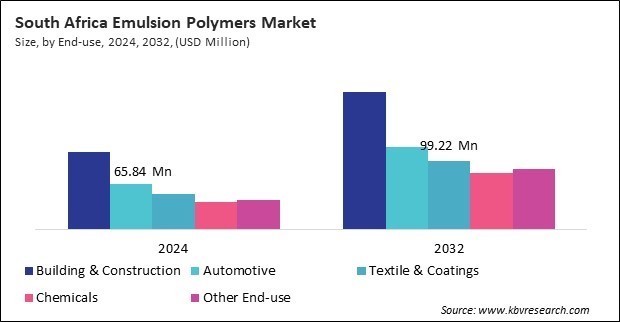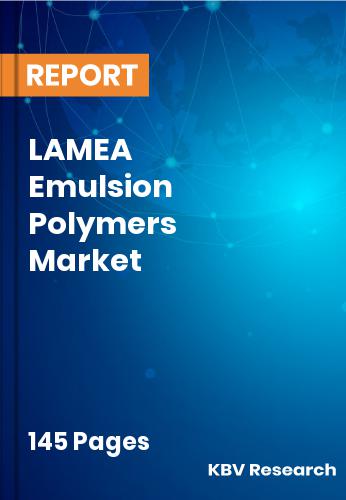The Latin America, Middle East and Africa Emulsion Polymers Market would witness market growth of 7.5% CAGR during the forecast period (2025-2032).
The Brazil market dominated the LAMEA Emulsion Polymers Market by Country in 2024, and would continue to be a dominant market till 2032; thereby, achieving a market value of $1,193.4 million by 2032. The Argentina market is showcasing a CAGR of 8.6% during (2025 - 2032). Additionally, The Saudi Arabia market is registering a CAGR of 6.6% during (2025 - 2032).

Trends in the market reflect the broader shifts in global industrial and consumer preferences. One prominent trend is the growing emphasis on sustainability, with manufacturers developing bio-based and renewable emulsion polymers to reduce reliance on petrochemical feedstocks. These eco-friendly alternatives maintain the performance of traditional polymers while appealing to environmentally conscious consumers and complying with green certifications. Another trend is the increasing demand for high-performance emulsion polymers tailored for specific applications, such as self-healing coatings, low-temperature curing adhesives, and high-durability construction materials. The rise of smart materials, incorporating stimuli-responsive polymers that react to temperature, pH, or light changes, is also shaping the market, particularly in textiles and biomedical applications.
Digitalization and automation in manufacturing processes are influencing trends, with advanced emulsification techniques and real-time quality control improving the consistency and efficiency of emulsion polymer production. The growth of e-commerce and packaged goods drives demand for specialized emulsion polymers in packaging, enabling lightweight, durable, and recyclable materials.
In Dubai, the significant rise in electric vehicles (EVs)—from a projected 7,331 in 2023 to 12,852 by 2025—under the Green Mobility Strategy 2030 framework- fosters demand for eco-friendly materials, including emulsion polymers. These polymers are extensively used to manufacture EV components' coatings, adhesives, and protective materials. Furthermore, as the strategy mandates a substantial shift to electric and hybrid vehicles, it encourages automotive manufacturers and component suppliers to adopt water-based, low-VOC (volatile organic compound) emulsion polymer products in paints and coatings, thereby boosting the regional market.
Free Valuable Insights: The Worldwide Emulsion Polymers Market is Projected to reach USD 52.74 Billion by 2032, at a CAGR of 6.2%
Based on Type, the market is segmented into Acrylics Polymer, Styrene-Butadiene Latex, Vinyl Acetate Polymer, and Other Type. Based on Application, the market is segmented into Paints & Coatings, Adhesives & Sealants, Paper & Paperboard, and Other Application. Based on End-use, the market is segmented into Building & Construction, Automotive, Textile & Coatings, Chemicals, and Other End-use. Based on countries, the market is segmented into Brazil, Argentina, UAE, Saudi Arabia, South Africa, Nigeria, and Rest of LAMEA.
By Type
By Application
By End-use
By Country
Our team of dedicated experts can provide you with attractive expansion opportunities for your business.

